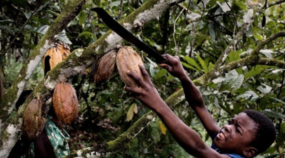Posted on 08 Jun 2017
As regional conflicts around the world have both multiplied and intensified, becoming situations of protracted conflict between multiple parties, an alarming increase in human trafficking has also become clear in these regions, both into and out of conflict zones. While trafficking for sexual exploitation might be the first presentation of trafficking people think of, it actually takes diverse forms in conflict situations.
In September 2016, the United Nations University, in collaboration with several other stakeholders, held a workshop on Fighting Human Trafficking in Conflict. Their report detailed the three main trafficking trends connected to conflict: trafficking within and into conflict zones (i.e. trafficking of people from outside a conflict zone into the zone, or trafficking of people already located in the conflict zone); child trafficking (for a variety of purposes, including as combatants, servants such as cooks, and increasingly as suicide bombers); and trafficking out of and through conflict zones (e.g. large refugee and Internally Displaced People (IDP) populations as they try to leave conflict zones, and irregular migrants trying to find opportunities by going through a conflict zone).
The 2016 US TIP Report specifically addressed human trafficking in conflict zones, and stated that increasing risks of trafficking of vulnerable groups in conflict situations arise for many reasons: increasingly desperate economic circumstances; the weakening or even breakdown of rule of law; fewer social services available; people leave their homes in search of safety, but are away from their homes and communities, their support structures that keep them safe, and so become vulnerable in unfamiliar surroundings. In these situations, without the tools to adequately maintain their livelihoods, people are more likely to look for opportunities that entail risky situations or illicit economies, which are often home to traffickers.
This blog post addresses four trafficking phenomena related to conflict: trafficking within and into conflict zones; child trafficking; trafficking out of and through conflict zones; and special or unique cases of trafficking in conflict zones.
Trafficking within and into conflict zones, and child trafficking
There are many current examples of human trafficking within conflict zones. One is the trafficking of members of the Yazidi minority in Islamic State/ISIS/ISIL-controlled areas. The Islamic State/ISIS/ISIL conflict grew out of the aftermath of the War on Terror in Afghanistan and Iraq, and has further spread to Syria as well. Well into its second decade, this conflict has destabilized an already unstable region, and has increased the vulnerability of groups like the Yazidi and the Kurds. In terms of sexual exploitation, Yazidi women are forced into what is called “chattel slavery,” meaning they are treated as actual property, to be bought, sold, or given at will. These women and girls are often forced to act as domestic servants and sex slaves. Others are forced to become the wives of militants, performing domestic chores at home, frequently pregnant, and often forbidden from leaving their homes. Yazidi men and boys have been forced to become militants and even suicide bombers.
A related, unique discussion of trafficking has arisen over whether the recruitment of Western women into the Islamic State/ISIS/ISIL should fall under the international definition of human trafficking. A report from the Georgetown University Institute for Women, Peace and Security, published in 2015, asked this question. The international definition of trafficking is made up of three key parts: 1. the recruitment, harboring, transportation, or receipt of an individual, 2. through force, fraud or coercion, 3. for the purpose of exploitation. The report argues that the recruitment methods used to lure women from the West to ISIL-controlled territory are similar to those of online pedophiles – grooming these women in an “environment of secrecy” to leave their families and friends, women are told that they are loved and showered with praise and affection. In this case, women don’t see themselves as victims, rather as going to be with someone who loves them. This consideration would have important implications for the international definition, as well as for the way that these women and girls are treated in the event they escape or are captured – instead of being treated as combatants, they would be treated as victims, since they were fraudulently recruited.
Unfortunately, human trafficking within conflict zones is also prevalent in Africa. Boko Haram, operating in West Africa, actively advocates the enslavement of populations in territory they control. Women and girls in these areas are often forced into marriages with militants, while boys are forced to become suicide bombers. There have also been instances of forced begging of children to raise funds for the group. In the Democratic Republic of the Congo, there are high rates of forced labour and sexual exploitation. The situation is very alarming: numerous armed groups are constantly vying to control parts of the country, rapidly making and dissolving alliances, all to the detriment of the population. Rich in natural resources, these militias force artisanal miners to search for tantalum, gold, diamonds, tin, and others, to make money to support their activities. In addition, children are trafficked within the country and indoctrinated into the militias. The United Nations University report estimates that there are around 30,000 child soldiers in the country.
Burma is an interesting case of trafficking both within and out of a conflict zone. The country has been in a situation of protracted conflict for more than fifty years, and though total military rule came to an end in 2016, this did not end conflict in the country. Beginning with the fight for independence post-World War II, the military forcibly took control in 1962, and immediately began a crackdown on ethnic minorities within the country. Rich in natural resources, and the site of pipelines moving natural gas and oil from the Andaman Sea, through Burma, to China, there were high rates of trafficking and other human rights abuses during military rule. Men, women and children have been subject to forced labour, such as portering, construction projects, farming, and child soldiers. Women and girls were also victims of sexual exploitation, by both the Burmese military, and the ethnic militias (based on a 2009 conversation the author had with a Burmese woman living in Thailand). People have also been trafficked out of the country. Members of the Kachin and Shan ethnic minorities, lacking citizenship or identity documents, have been especially vulnerable as they tried to leave the country. The current conflict in Rakhine state, involving the Rohingya minority, has also led to trafficking. Rohingya Muslims fleeing repression in Burma are often trafficked through Thailand to Malaysia, a Muslim country. Some of these refugees find themselves trapped in jungle trafficking camps until either their families pay a ransom, or they are forced to work on Thai fishing boats.
Trafficking out of and through conflict zones
Trafficking out of and through conflict zones takes many forms, though the primary manifestation is the trafficking of refugees, internally displaced persons (IDPs), or migrants. People attempting to flee their homes, or trying to send family members out of conflict zones, are extremely vulnerable, and at much higher risk of trafficking. A key example of this is the “refugee crisis” that Europe experienced in summer 2015. The Global Initiative has multiple publications on human smuggling into the EU, which can be found here.
The UN University report provides information on this and other examples. The ongoing crisis in Syria has produced thousands of refugees, many trying to escape to Europe. Trafficked Syrian children have been discovered working excessively long hours in situations with no labor oversight. Political unrest in Libya has caused trafficking for sexual and labor exploitation purposes as well. There have also been instances in which traffickers fraudulently recruit individuals, confiscate their documents and use debt bondage to retain control of them. Others have simply been held for ransom until their families can pay to have them released. The Horn of Africa has been the site of conflict for decades; there have been reports that migrants have been kidnapped by armed groups operating along known trafficking routes, and then bought by traffickers for further exploitation. Refugees, IDPs and migrants are not only vulnerable as they travel, but also once they are placed in refugee or IDP camps, and even in host communities. Criminal gangs operating as traffickers in the refugee camps at Calais and Dunkirk have sexually exploited youth traveling alone, or forced them to commit crimes in exchange for transportation to the UK.
In June 2016, the Guardian published an article about refugee and migrant children traveling alone from their homes (primarily in Africa and the Middle East) to European countries. The majority of these children have been sent by their family members to escape conflict in their home countries, such as political unrest in Gambia, or recruitment by al-Shabaab in Somalia. Many children are forced to participate in a “pay-as-you-go” system, meaning they work along the way to finance their journey. Traffickers operate along these routes, exploiting children – both sexually and for labor – as they make their way north.
One special case of trafficking related to conflict zones is organ trafficking. Organ trafficking arose in the Balkans towards the end of the conflict in the late 1990s, but has allegedly continued in Kosovo. Plans for a Kosovo war crimes court are being finalized, but the court is due to hear cases of civilians kidnapped and trafficked across the border into Albania, where their organs were harvested and trafficked to other locations. Cases have also been reported among migrants coming to Europe from Africa. In 2014, Italian authorities discovered an organ trafficking ring involving traffickers from Libya and Eritrea, who charged migrants an up-front fee to get them from Africa to Italy. If migrants could not immediately pay the fee, they were given the option to pay once they arrived in Italy. Upon arrival, however, they were either exploited for forced labor, or their organs were harvested and then trafficked elsewhere.
Finally, another unique case of trafficking in conflict zones concerns UN peacekeepers. The most well-known case of peacekeepers directly involved in human trafficking occurred in the Balkans, following the conflict surrounding Bosnia and Herzegovina in the mid-1990s. Human Rights Watch published a lengthy report on the trafficking of women and girls into the area after the Dayton Peace Agreement, when the region was struggling in the aftermath of the conflict. An executive summary of the report can be found here, but the report provides details of specific cases in which members of the International Police Task Force, operating as part of the UN Mission in Bosnia and Herzegovina, were directly involved in the trafficking of women. Sexual abuse of women and girls by peacekeepers has been well documented in other regions of conflict, as well, most recently the Central African Republic (Washington Post article, Human Rights Watch dispatch).



